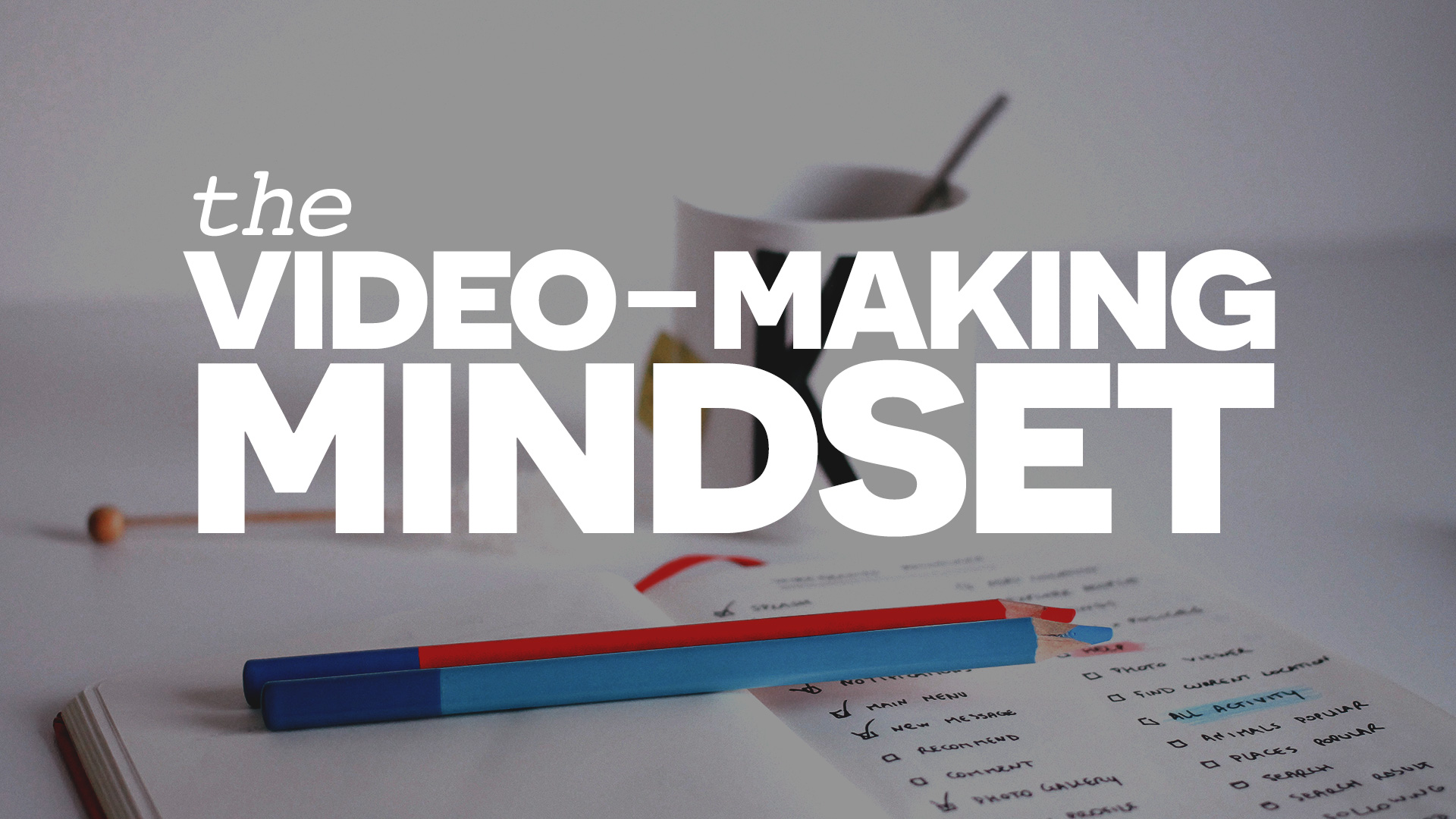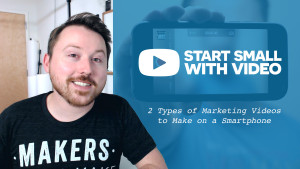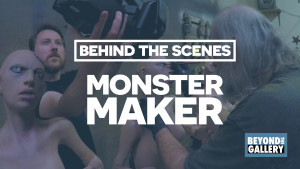

Deciding to make videos for your business is a really exciting step to take. You know they’ll help personalize your relationship with your audience online. But it’s hard to make videos consistently for a number of reasons.
As with any creative discipline, you have to navigate the technical learning curve when learning how to make videos – writing scripts, lighting, good sound, framing shots, editing footage, etc.
All of these mechanics may feel intimidating, but don’t worry, we’ll get into the technical side of it soon enough.
Before we focus on any of the mechanics of video making, you need to get in a good headspace, and for that I want to share what I like to call The Video-Making Mindset.
The Video-Making Mindset is a simple framework that you can use to quickly and consistently make videos you’re proud to share and your audience loves to watch.
And it all starts with planning: Making great videos takes some time upfront to pre-visualize them before actually filming anything.
In the past when I haven’t planned my own videos, I’ve ended up taking a shotgun approach: Grabbing shots of a little bit of everything, and thinking that I’d figure it out while editing. This approach works for some, but for me it led to inconsistency. And more than anything it made for a really frustrating editing process.
Editing a video is hard enough – from managing the media to the software workflow – so save yourself time and prevent frustrations by getting into a prepared mindset before you even hit record. I’ll show you this simple framework that you can refer back to, so every time you’re making a video you’ll know exactly where to start and how to plan it.
THE VIDEO-MAKING MINDSET
1. Think of your audience first.
At first this might feel counter-intuitive since you’re making videos about yourself and your business, right?
Yes, your videos are about you but always make them serve your audience first.
At their core, your videos always need to bring value to your audience. Your viewers need to know what’s in it for them before they start to care about you and what you have to offer them. So put your audience first.
2. Make a habit of collecting video ideas.
Don’t wait until you want to make a video to brainstorm video ideas.
Keep a notebook – analog or digital – so you have one consistent spot where you collect your video ideas. It doesn’t matter what you use as long as you’re consistent with how you use it.
It took me a while to find a system that fit my writing approach, but eventually I landed on Evernote for all of my writing. It’s simple and a relatively distraction-free app, plus it’s easy for me to find my ideas no matter how much time has passed since I wrote it down. And that’s super important to be able to find them easily later.
No matter what you land on using to collect your video ideas, whether its an app on your iPhone or a notebook in your bag, make it really easy for you to use it.
3. Strive for perfection but embrace excellence so you can get your videos out there.
All my life I’ve struggled with my relationship with perfection in everything that I make and share with others. After collaborating with many like-minded creatives on Beyond the Gallery, I believe it’s a common trait among us who pursue excellence in our creative disciplines. And making videos is no different.
Here’s the thing: Being a perfectionist is okay.
That’s not a common belief, but here’s why I believe it’s okay: It means that you care about what you’re doing.
You care about the work. You care about who you’re serving. You care about yourself enough that you want what you’re doing to be its absolute best. And that’s important. It’s valuable.
But don’t get so hung up on making it perfect that you never finish it and share it. Strive for perfection, but don’t let it get in your way and prevent you from sharing videos that are still excellent.
4. Shorter videos are faster and easier – for you to make and for your audience to watch.
You have way more things to do in your business than just make videos for your audience. Respect yourself and your audience by focusing on making shorter videos, at least in the beginning.
Your short videos will be much easier for you to make, plus your audience will appreciate that you’re respecting their time by giving them the choice to watch more short videos if they want to. This also sets you up to successfully deliver videos for your audience with a more consistent schedule and quality.
5. To get over the fear of being on camera: Practice.
Being on camera is hard. It hasn’t come naturally to me. I’ve had to work at it, and continue to.
Before we started filming season three of Beyond the Gallery, I knew that I was going to be on camera way more than usual, and I wanted to actually feel comfortable doing it. So I decided to practice.
I challenged myself to talk to my camera every day – at least 3 times a day – for 5 days. And I just did it on my iPhone. It was nothing fancy. Essentially I vlogged (or video blogged) a daily journal of my life for a week.
I had one goal: To feel more comfortable talking to a lens.
Did it work? Yes, and noticeably well. Over the week of vlogging and editing the footage, I started to notice little nuances in the way I talk and how I share ideas conversationally on camera. By the end of practicing, I felt a greater awareness of myself and, in a way, how others see me.
Talking to a camera is something I continue to work on, and I encourage you to try it yourself. You may even find that you grow to enjoy it, and if not for anything else, for posterity sake. You don’t have to share your practice vlogs publicly, of course, but sharing just one with someone for their first impressions will help you improve faster.
Consider vlogging to be like the video equivalent of a snapshot: It doesn’t need to be polished; it’s simply a collection of interesting moments from your day, and captured by you.
6. Unlock your videos’ secret powers with a plan.
When you separate the planning and making stages for your videos, you’ll know what you want from the start and still have space to play while you’re making them, too.
The secret power within your videos’ structure comes out when you have a path that you can follow in the making stage. Run with the plan that you made and you’ll feel confident to play with new ideas, too.
INSPIRATION FOR
YOUR VIDEO-MAKING MINDSET
Remember that adage, “measure twice, cut once”? This applies to planning videos that you can make consistently. Plan ahead for the videos you’ll make, and you’ll set your future self up to succeed at doing it.
To get your video-making gears turning, consider studying these successful Instagrammers to see what’s working for them. Each of the images are clickable, fifteen-second Instagram videos:
Eric Landon, potter – tortus-copenhagen.com
Megan Burtt, singer/songwriter – meganburtt.com
#cdrelease #thebargain See you on the 29th! Tix @ theorientaltheater.com A video posted by Megan Burtt (@meganburtt) on
Jeff Bosley, actor – facebook.com/welcometoboz
Jennifer Beaudet, painter – etsy.com/shop/JBeaudetStudios
Trying to post my first video! How does it look? #allaprima #pochade #oilonpanel #oilpainting #workinprogress #workingartist #art#artist #contemporaryart #californiaartist #california A video posted by Jennifer Beaudet Art (@jbeaudet_art) on
Bob Clagett, maker – iliketomakestuff.com
But what about video quality with filming, lighting, sound, editing and… the fear of being on camera?
Yes, they’re all important, but only when you put your audience first and make your videos valuable for them.
Your audience will accept the video quality and embrace the content because it’s actually valuable to them. If the content of the video isn’t valuable in your audience’s eyes, no equipment, software or techniques could keep them engaged.
Whether you’re making videos to entertain, inspire or teach, providing valuable content for your audience comes first. After that great visuals, sound and your comfort on camera will give you an edge and make your videos even better.
Join me in getting into The Video-Making Mindset and start planning your next great video for your business.
ACTION STEPS:
- Collect a bunch of video ideas – every week, ask yourself, “What am I working on that my target audience might find interesting or helpful?”
- Filter your video ideas to find the best ones – ask yourself, “Does my audience care about this? Is this valuable for them?”
- Choose two of your best video ideas – make a short outline for each one so you can pre-visualize what you’d like to include.


